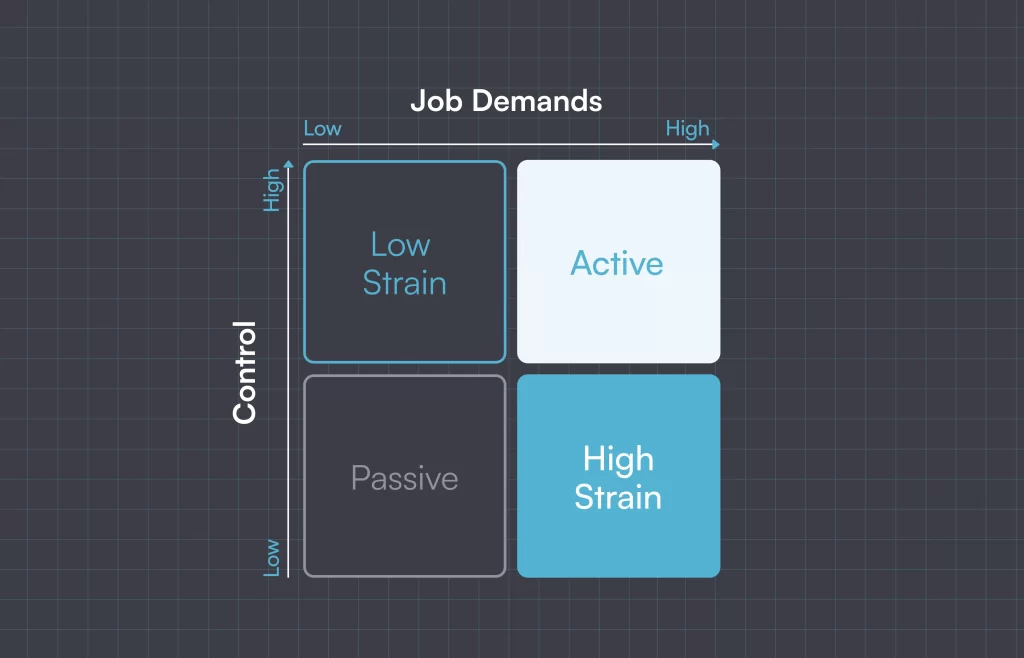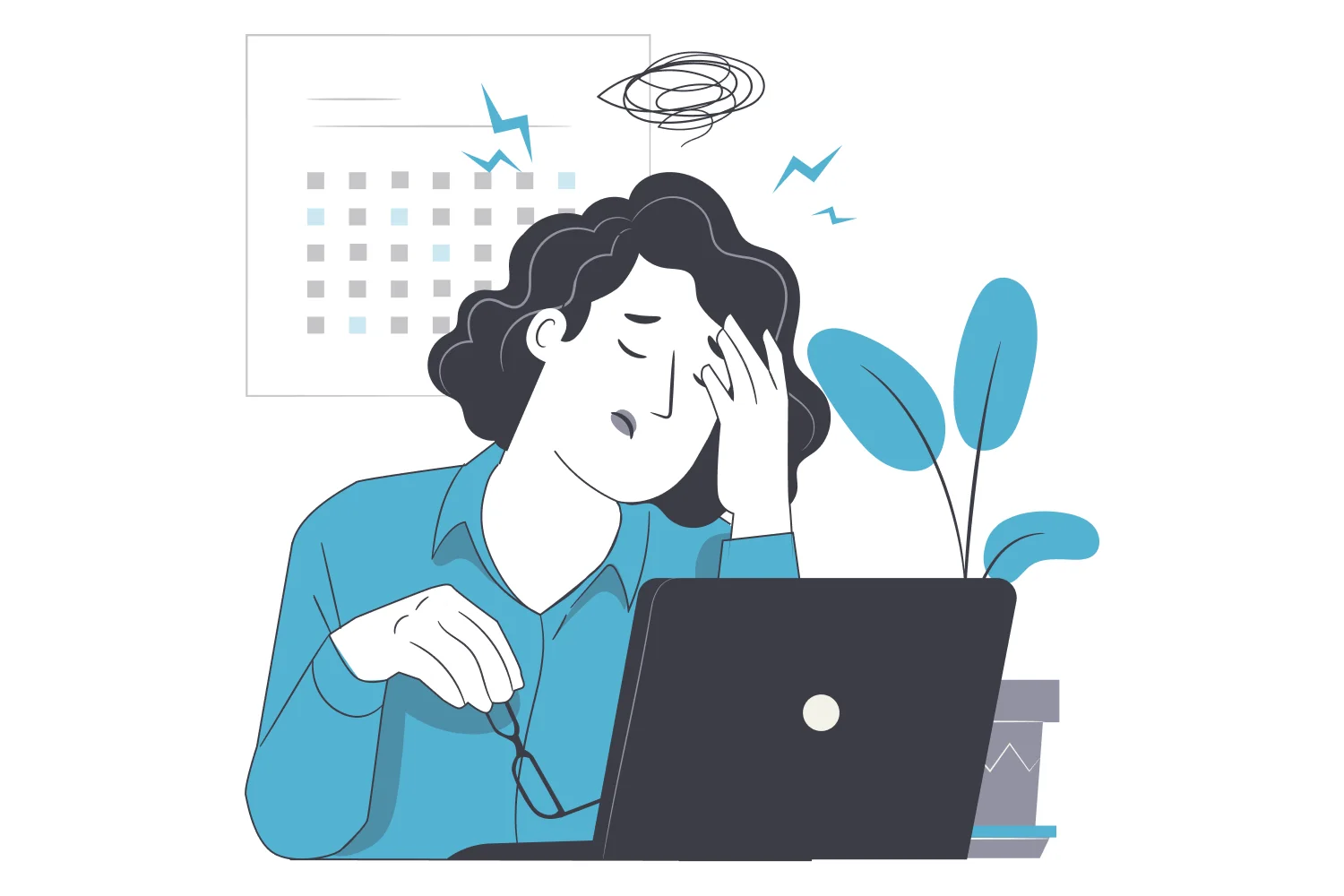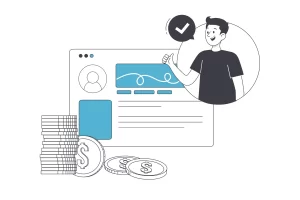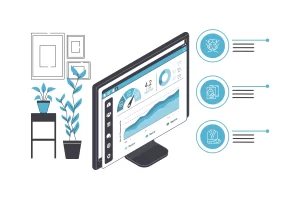You’ve probably heard of the term “burnout.”
It’s not everyday stress hiding behind a buzzword. Think of it like an epidemic leaving exhausted workers in its wake, compromising their work quality and mental health.
With the CDC, the leading health authority in the US, sounding the alarm about burnout rates, it’s time we take some action.
Whether you’re a healthcare worker fighting to keep your head above water or a clinic owner seeing your best people struggle, things can change.
We’ll talk about the top four reasons for burnout in healthcare and offer real solutions, including how practice management software (like Pabau!) can play a supporting role.
Let’s get started.
Chronic work overload and staffing shortages
We begin with the most obvious and pressing issues.
As you probably know firsthand, the healthcare system has some incredibly demanding workloads. Whether it’s all the paperwork, the admin tasks that never seem to end, or taking on overtime to ensure your patients get the best possible care… those demands quickly snowball.
Soon you’re faced with too many patients, tight schedules, and extra work that falls outside your role. It’s exhausting and a recipe for burnout.
The scary part? Chronic work overload disguises itself as manageable until, suddenly, you reach a breaking point with no warning.
And when healthcare workers reach their limit, they are more likely to simply quit their jobs to deal with the stress and exhaustion.
In fact, according to a House of Commons report on burnout in healthcare, chronic work overload is the main reason for staff shortages, an added blow to the already short-staffed healthcare industry.
A vicious cycle begins – burnt-out health workers quit, meaning even more work for those that remain, increasing their burnout risk and fueling the pattern.
But what can we do to fix this problem?
Solution: Expand the workforce and utilize the right tools
The first solution seems obvious, right? Hire more people!
But how do you know if and when to expand your team?
It’s important to continuously track how busy the staff is. Have regular check-ins with team members, see if any symptoms of burnout are present, and ask if anyone needs support.
If everyone’s overworked, then you can think of bringing in extra hands to pick up the slack.
But, before rushing to post those job listings, there’s something else to consider.
Time-consuming and repetitive work will be frustrating for staff whether you have a team of 5 or 50 people. It’s the very nature of the tasks combined with the sheer volume of work that causes work overload.
So, instead of distributing the same tedious work to more team members, you can lighten current workloads with modern practice management software like Pabau.
Pabau has several functionalities that automate those time-sucking tasks impact efficiency – taking calls, rearranging appointments, collecting and updating patient info, manually sending pre and post-care instructions…
You know, all that stuff that keeps your front-of-house team bogged down at the computer instead of focusing on creating a warm and friendly environment for patients in the clinic.
Plus, our online bookings tool is a game-changer. It allows clients to book an appointment 24/7, even outside your working hours. So you’ll be saving your team’s time while ensuring you don’t miss out on those clients who want to book on a Sunday evening.
You and your staff will love how much this cuts down on endless scheduling phone calls and emails, and clients will appreciate the increased flexibility. Win-win!
Book a demo to see how Pabau can become your new (very efficient) team member.
Lack of control and autonomy
Let’s shift to another closely related reason for burnout in healthcare – feeling a lack of control and autonomy.
Job autonomy boils down to having a say in your working conditions. It’s the ability to make decisions and have some much-needed workflow flexibility.
With the demanding nature of healthcare, not having even a bit of autonomy adds an extra layer of stress and frustration to those already heavy workloads.
In fact, according to a well-known theory called the Demand-Control Model, the worst-case scenario healthcare professionals can face in terms of mental health and well-being is having high work demands coupled with low job control.

You might have heard of quiet quitting on social media, where staff stop taking on extra tasks and put in minimal effort in their work.
That’s not laziness — it’s a symptom of burnout and a direct result of the lack of control and high job demands these workers experience. They feel depersonalized, numb, and disengaged with their work, feeling that they have nothing left to give.
Lack of control can manifest in countless ways.
It might be the overly strict protocols that leave zero room for judgment calls. Or perhaps it’s a rigid organizational structure, with talented professionals needing to ask supervisors for permission before they do anything, feeling like mere cogs in a machine.
Whatever the form, the result is the same: when people feel powerless over their work, that chips away at their sense of fulfillment.
Solution: Empower the frontline staff & offer flexible work arrangements
Frontline staff – physicians, nurses, medical assistants, the people interacting with patients daily – they’re the ones most intimately familiar with a clinic’s challenges and unique needs.
That’s why empowering them is a powerful intervention for preventing burnout and potentially improving some inefficient clinic processes.
What does this look like in practice?
It means encouraging independent decision-making within each role, allowing some flexibility within appropriate guidelines, and creating a work environment where input is valued instead of dismissed.
A powerful approach is a technique called job crafting. It involves letting caregivers customize aspects of their job – perhaps tweaking certain tasks or rearranging their schedule to suit them better.
Research shows that job crafting has real benefits. One study, for example, found that nurses who had control over their work felt more engaged and provided better patient care.
However, empowerment can go beyond these individual changes.
To achieve a truly collaborative workspace, including staff in larger decisions, especially ones impacting their day-to-day work, is key.
You need open communication channels where team members can ask questions, share concerns with supervisors, and collaborate on finding solutions.
It’s amazing how often those on the frontlines have simple but brilliant ideas that improve things for everyone!
Administrative burdens and inefficiencies
If there’s one thing we’re sure healthcare workers would change given enough job autonomy, it’s the volume of administrative work.
We know admin tasks are vital – they’re how clinics stay organized and safe.
From clinicians updating health records and navigating health insurance requirements to managing stacks of medical forms, it’s all necessary to comply with all-important laws like HIPAA (Health Insurance Portability and Accountability Act).
But just because it’s necessary doesn’t mean it’s enjoyable.
Let’s face it: paperwork is tedious.
And while those monotonous admin tasks might seem harmless, they sneakily sap energy and become a huge stressor for workers, fueling those rising levels of burnout in healthcare.
Imagine being hunched over a desk for hours, scribbling notes, or trying to decipher a clunky, outdated software system.
You just know that this process could be faster, but here you are, losing precious time.
After a while, focus wanes. That’s how medical errors happen – a missed allergy note, a prescription code mistyped in a rush, or an intake form you forgot to get signed.
A seemingly simple oversight caused by hours of mind-numbing paperwork can translate into devastating consequences for patient safety.
Unfortunately, much of the healthcare workforce spends hours doing admin tasks, sometimes on par with time spent on patients.
Primary care providers face a particularly heavy burden, where the amount of admin overload often leads to emotional exhaustion, hindering their ability to provide high-quality patient care.
So, what’s the solution to this admin nightmare?
Solution: Streamline the administrative process with the right technology
Your first answer could be just organizing paperwork better. But that’s like putting a Band-Aid on a broken leg – we want to reduce paperwork and admin work, not just manage it.
One solution is using electronic health records (EHRs).
They help with securely storing patient information, and make sharing patient data between authorized providers faster and more reliable. This means less time wasted searching for files or waiting on transferred records.
So you definitely want the functionality of EHRs to cut down on admin work. But to go one step further, you might want a tool that does everything an EHR can, plus gives you even more ways to save time and eliminate monotonous tasks.
This is where Pabau steps in again.
Imagine handling consent forms before an appointment even starts and automatically storing that info directly in a client’s profile. Or going a step further and storing all the paperwork there: invoices, important documents, even patient photos.
On top of that, everything from your EHR – lab tests, prescriptions, forms – is accessible in that same spot, with powerful automations helping you manage them efficiently.
It means your client’s entire file lives digitally, helping you go paperless one step at a time.
So, leave more time for important tasks and aim to do away with all the admin juggling.
Lack of recognition and appreciation
Finally, let’s talk about recognition and appreciation, a major factor in burnout.
The COVID-19 pandemic underscored the immense sacrifices made by the entire healthcare industry. It went beyond physician burnout. Other specialties like nursing assistants, pharmacists, and even social workers were all pushed to their limits during this period.
That’s why it was heartwarming to see these caregivers get some much-deserved recognition for their invaluable role in public health.
But a global crisis shouldn’t be the only time healthcare professionals feel seen.
That’s especially true when you consider the ongoing NHS strikes across the UK or healthcare workers feeling underpaid and underappreciated in the US.
Consider the implications — studies show that clinicians who feel appreciated experience a 37% burnout rate compared to a staggering 69% for those who don’t.
It’s not hard to see why this is the case.
Imagine not being paid adequately for the grueling nature of healthcare work. Or worse, feeling that your dedication goes completely unnoticed without either a word of praise or a token of appreciation.
It’s hard enough to keep up with demanding workloads, but it’s so much worse if you believe these efforts feel undervalued.
Being chronically underappreciated can destroy something essential: a sense of purpose.
Without consistent, genuine recognition for their efforts, even the most dedicated professionals start to question themselves, and start to believe that their sacrifices count for nothing.
Solution: Invest in professional development and implement recognition programs
The solution to this problem goes beyond a simple thank you.
To truly prevent burnout in healthcare and support our talented caregivers, it’s crucial to create a work culture where the workers feel supported, appreciated, and inspired to reach their full potential.
We can start doing that by investing in education and training. Offering funded programs for continuing education demonstrates a strong belief in your staff. It shows you value their personal growth and want to see their long-term potential blossom.
Or, consider implementing some recognition programs that can both show your appreciation and incentivize staff to earn some appealing rewards.
Try introducing some of the following:
✅ Extra days off and monetary rewards based on performance
✅ Company-wide gifts and celebrations for exceptional work
✅ Award ceremonies to highlight individual achievements
✅ Point-based gifting programs
✅ Leadership acknowledgment of star employees
Gifts and monetary bonuses are very straightforward rewards. Meanwhile, group celebrations or awards for personal accomplishments – like successful patient acquisition or helping a colleague – show you’re paying attention to staff efforts.
These programs don’t just feel good. They send a powerful message: “We see you. Your hard work is noticed, and it matters.” This reinforces a sense of purpose and belonging, a powerful antidote to burnout.
By investing in both professional development and meaningful recognition, healthcare organizations can build a workplace culture where staff members feel motivated and valued.
Looking to improve your clinic's efficiency to mitigate burnout? Try Pabau today
As you might have noticed, much of the prevalence of health worker burnout revolves around crushing workloads and the sheer amount of manual tasks.
To directly address these root causes of burnout in healthcare, practice management solutions like Pabau can be one of your greatest allies.
Our software streamlines many of your clinic’s processes – from automating much of the admin work and thus reducing workloads, to letting patients book their own appointments, freeing up your team to focus on more engaging and important tasks.
And that’s just scratching the surface.
Curious to discover how Pabau can transform your clinic’s operations?
Book a demo and see the benefits first-hand.




